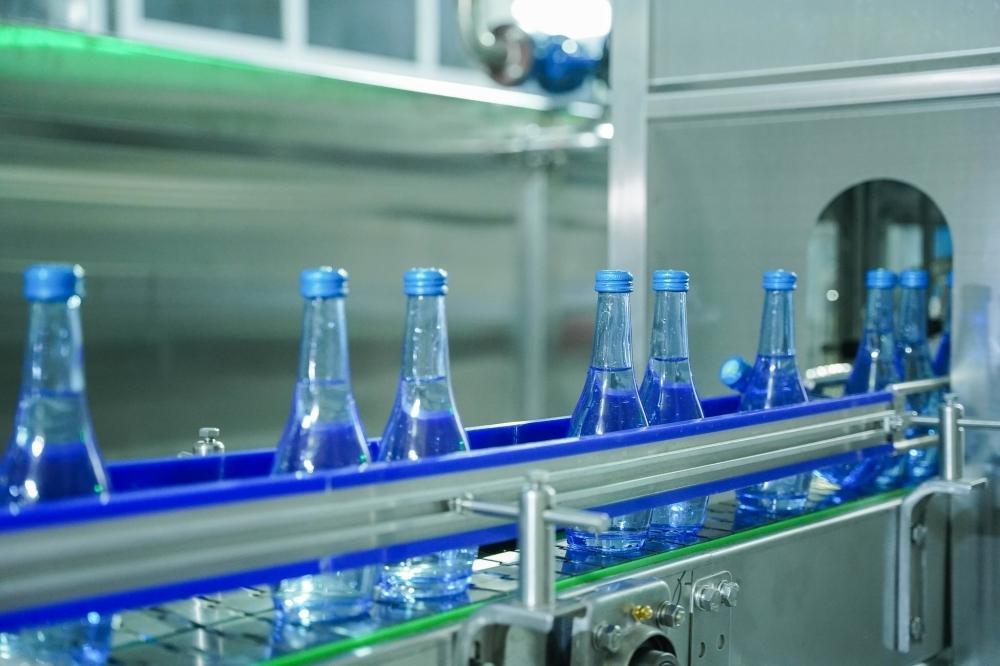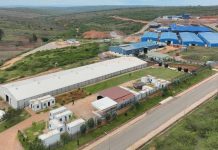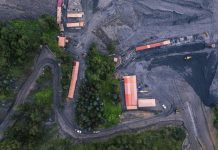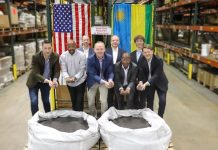Africa-Press – Rwanda. Rwanda could become a significant player in the glass manufacturing value chain, thanks in large part to an estimated 73 million tonnes of silica-rich sand reserves spread across the country, according to Rwanda Mines, Petroleum and Gas Board (RMB).
Studies have confirmed that such sand deposits, primarily located in Kirehe, Masangano, Nyamasheke, Karongi, Rutsiro, Rubavu, Nyabihu, and Muhanga, are capable of supporting large-scale glass production for the next 700 years.
A comprehensive feasibility study focused on the potential of Kirambo, Masangano, and Kirehe assessed the availability, quality, and accessibility of raw materials required for glass manufacturing.
The evaluation placed particular emphasis on silica sand, the principal ingredient in producing industrial glass.
According to the findings, all targeted areas contain sufficient volumes of high-quality silica sand suitable for both flat and container glass production.
To verify the quality of the deposits, a representative sample was sent for analysis at Mulia Glass Factory in Indonesia, one of the region’s reputable glass manufacturers.
Results from chemical comparison tests showed that the silica sand from Kirehe is of exceptional quality.
The study revealed that a sample from the Kirehe deposit contains 98.9% silica, a level considered ideal for producing glass bottles, windowpanes, fibreglass, and several other industrial products.
Local leaders view the discovery as a catalyst for economic transformation.
Modeste Nzirabatinya, Vice Mayor of Kirehe District in charge of economic development, emphasised the opportunity, stating: “There is potential in the Nasho and Nyarubuye areas to extract sand for glass manufacturing. It can boost our economy and increase revenues.”
Market trends align with this optimism
According to a Global Market Insights report, the flat glass market in East Africa is expected to surpass $235 million by 2024, driven by construction growth, the shift away from plastics, and rising demand for beverage packaging.
In Rwanda alone, demand for glass bottles was projected to increase from 21,816 tonnes in 2023 to 24,179 tonnes by 2027, further strengthening the case for domestic glass production.
Investor interest rises ahead of mining week
Rwanda’s rapid economic expansion has attracted interest from investors ready to establish glass manufacturing plants, with an eye on both domestic and regional markets.
Further steps are expected to be taken during deliberations and side events at next week’s ‘Mining Week’ forum, scheduled for December 2–5, at the Kigali Convention Centre.
The forum brings together policymakers, investors, mining firms, technology providers, researchers, and development partners to shape the continent’s future minerals landscape.
This year’s edition will highlight how Africa’s mineral resources, which include Rwanda’s vast silica sand, can power sectors such as clean energy, aerospace, artificial intelligence, and advanced manufacturing.
According to RMB, Rwanda has enough sand deposits suitable for glass manufacturing to sustain extraction for the next 700 years, underscoring the long-term viability of a local glass industry.
Sand reserves by region
Kirehe boasts the country’s most significant silica sand reserve, with more than 55 million tonnes identified. RMB assessments conclude that the district’s deposits meet international standards in both quality and volume.
Kirehe’s sand is not only rich in silica but also associated with other essential raw materials, such as feldspar and limestone.
Prudence Rubingisa, Governor of the Eastern Province, stressed the strategic importance of these resources, stating: “As per RMB, our country has reserves of silica sand, especially in the mountains of Nyarubuye and Nasho in Kirehe District. Upon mobilisation of strategic investments being carried out by RDB in the development of the manufacturing of glasses, the Eastern Province will benefit from it through job creation, infrastructure development, economic diversification and revenue generation.”
Rubingisa added that the country’s decision to ban plastic containers has contributed to rising demand for glass bottles, cups, and windows, increasing pressure on current supply chains.
Masangano: 3.4 million tonnes
Masangano, located between Gakenke, Muhanga, Ngororero, and Nyabihu districts, hosts approximately 3,471,000 tonnes of sand suitable for glass production.
The site is considered strategically placed due to its proximity to Lake Kivu, which can facilitate easier transport for industrial operations.
The Ministry of Trade and Industry’s Construction Materials Master Plan categorises this deposit as high-quality and capable of supporting future manufacturing.
Kirambo–Kirimbi: Nearly 1 million tonnes
In Nyamasheke District, the Kirambo–Karundura/Kirimbi deposit contains an estimated 730,000 m3, equivalent to more than 985,000 tonnes of sand.
Studies show a quartz content ranging from 80–85%, making it suitable for various silica-based industrial applications, including glass production.
Karongi, Rutsiro, Rubavu, Nyabihu, and Muhanga
Karongi District has confirmed deposits according to assessments by the African Development Bank and MINICOM’s Construction Materials Master Plan, though specific silica volumes were not detailed.
Additional deposits exist in Nkora (Rutsiro), Pfunda and Sebeya (Rubavu), and Nyamutera and Giciye (Nyabihu), as well as in Mwaka, Muhanga District.
For local enterprises, the establishment of a glass industry presents new economic opportunities.
Etienne Secumi, a sand-mining investor in Rutsiro, explained: “We extract and supply 2,000 tonnes of sand per month for the construction sector. The quantity we supply and our revenues could increase once the new glass manufacturing plant is established.”
He called on authorities to provide clear guidelines for identifying high-quality sand reserves, adding: “We need to know where sand reserves with the required quality are located. We are ready to invest.”
The study also confirms the availability of key additives such as limestone and dolomite.
Limestone, which constitutes about 10% of raw material inputs, has been found in substantial quantities in Rulindo, Burera, Musanze, Karongi, and Rusizi districts.
These reserves are sufficient to support the glass industry for 475 years. Dolomite deposits, also critical for certain types of glass, can sustain operations for approximately 80 years.
Investment requirements and production potential
The Rwanda Development Board (RDB) has actively encouraged investment in glass manufacturing to capitalise on the nation’s abundant high-grade silica sand. According to an RDB feasibility study, domestic production could reduce current glass product prices by 30%.
RDB estimates that investments of $85 million are required for a flat glass plant and $150 million for a container glass factory.
Once operational, Rwanda would need to produce 220 metric tonnes of container glass annually—generating about $45 million in revenue and 400 metric tonnes of flat glass, expected to yield $75 million per year.
Flat glass commonly serves in windows, doors, windscreens, and transparent walls, while container glass is used in bottles, jars, and various drinkware—products in growing demand across East Africa.
For More News And Analysis About Rwanda Follow Africa-Press






